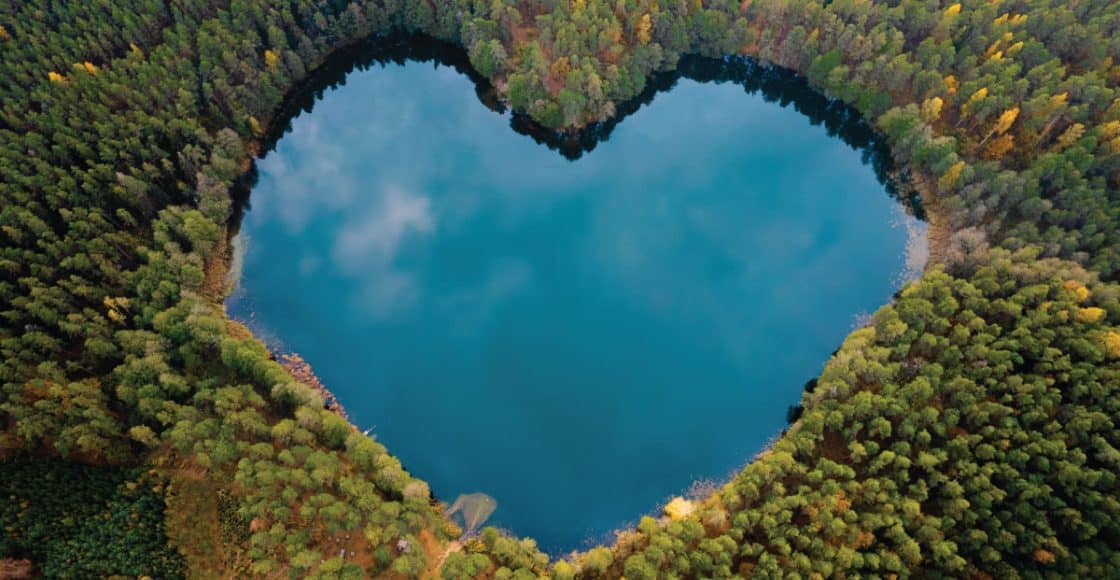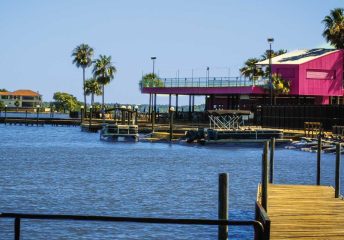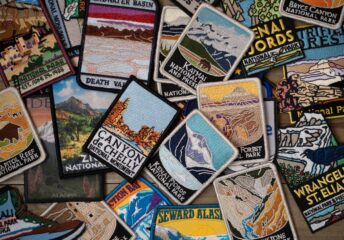7 Earth Day Activities for Boaters
Last Updated on April 16, 2024 by Boatsetter Team
Earth Day is celebrated every year on April 22 as a way to show support for protecting the environment. Events and activities take place not just on that day, but sometimes for the whole week or month, bringing awareness to issues that affect the environment and what human beings can do to help.
Boaters have always been at the forefront of wanting to protect the waterways and the marine life within them—because boaters love to fish, swim, and enjoy everything those waterways have to offer.
Here are seven Earth Day activities for boaters who want to show their support for the environment:
- Organize a beach cleanup
- Minimize your waste
- Slow down your speed on the water
- Treat yourself to new shades
- Clean out your maintenance locker
- Switch to coral-friendly sunscreen
- Cruise to a national park
Book a boat rental to celebrate Earth Day in your community
1. Organize a beach cleanup
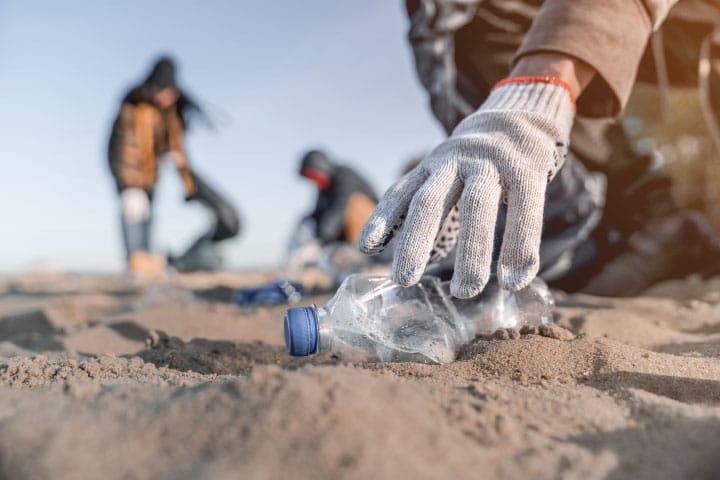
A beach cleanup is just what it sounds like: A group of people getting together to walk along and collect trash from a beach. These beach cleanups can be done anywhere—and, in fact, they happen everywhere. The International Coastal Cleanup organization alone has seen more than 17 million volunteers collecting more than 348 million pounds of trash. The National Environmental Education Foundation offers free tips for organizing a beach cleanup. More tips are available from Ocean Conservancy.
2. Minimize your waste
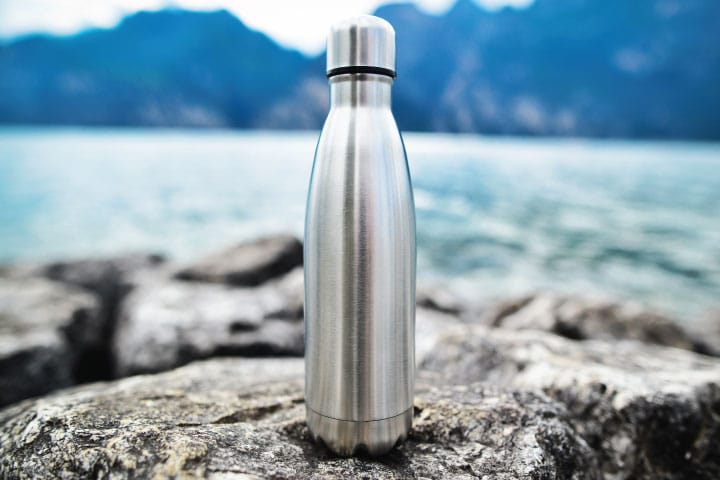
Fewer beach cleanups would be needed if we all managed to keep our trash out of the world’s waterways in the first place. Boaters can do their part by minimizing waste products on board. If you regularly use plastic utensils, invest instead in reusable utensils. The same goes for replacing paper and plastic cups with reusable drinkware (stylish, shatterproof products are available from Yeti and other brands). Ditch the paper and plastic plates in favor of reusable versions of those, too.
Be sure to check out Green Boating: 6 Sustainable Best Practices for Boaters.
3. Slow down your speed

Aboard many boats, cruising slower can mean burning less fuel. Which, of course, means the need to buy less fuel. Which, in turn, means the need to produce less fuel. Which, at the end of the day, means less strain on the planet’s resources. With some boats, skippers can improve their fuel economy by a whopping 300% if they slow down just 1.5 knots. A good tip is to look up your boat’s fuel-burn curve, which manufacturers provide. Know what the sweet spot is in terms of speed vs. fuel burn, and stick to it for that particular boat. This not only helps the planet, but it also helps your wallet by minimizing the number of trips you need to make to the fuel dock.
4. Treat yourself to new shades
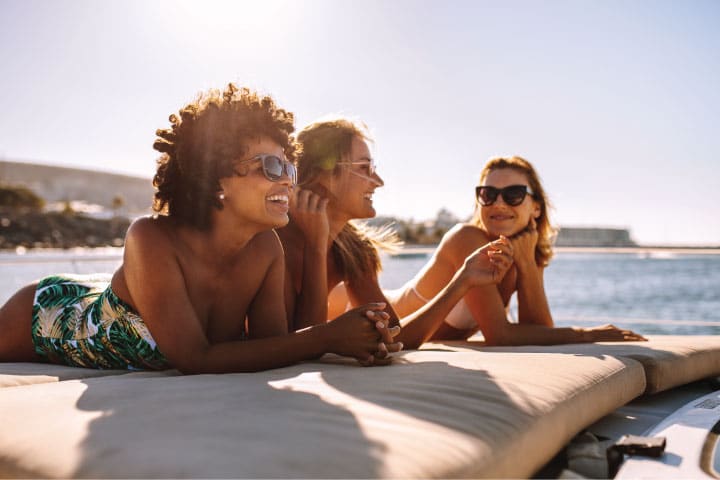
If you’re in the market for new sunglasses, consider buying a pair that also do some good for the environment. Costa Del Mar’s Untangled collection is made from 97% to 100% recycled fishing nets. Bajio sunglasses are also made with bio-based frames (and they come in cactus-leather cases). Both those brands combine eco-friendly technology with years’ worth of experience making the kinds of polarized lenses and hardy frames that can stand up to a day on the water under the harsh glare of the sun.
5. Clean out your maintenance locker
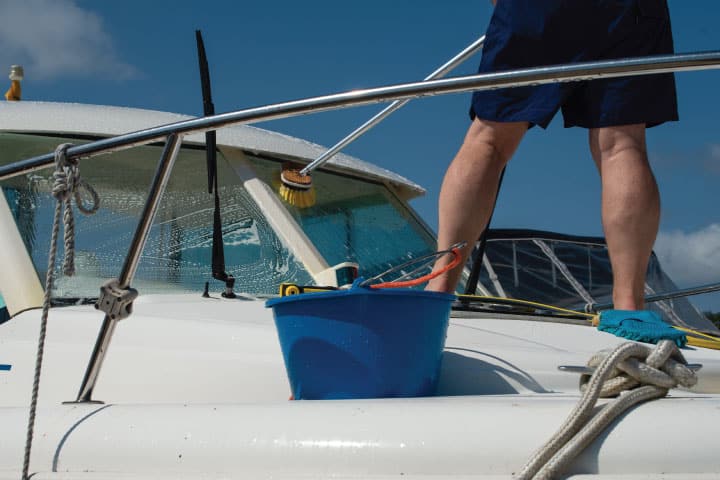
One of the easiest ways for boaters to reduce their environmental impact is to switch from traditional cleaning supplies to eco-friendly products. Sailors for the Sea lists a bunch of eco-friendly cleaning products and offers suggestions for how boaters can use everyday items to create their own nontoxic mixtures for removing mold, dirt, odors, and other nuisances that can plague any boat.
6. Switch to coral-friendly sunscreen
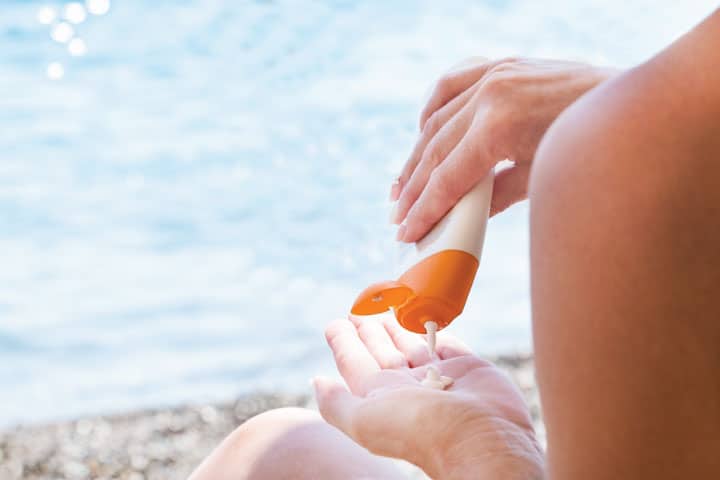
Organizations that work to protect coral reefs have been saying for years that boaters (and swimmers and surfers) should switch to types of sunscreen that won’t harm the reefs. The offending ingredients in many everyday sunscreens are oxybenzone and octinoxate, as well as benzophenone, mythylbenzylidene, and octocrylene. All of them can affect the reproductive cycle in coral, as well as make coral bleaching worse. Switching to more eco-friendly sunscreens can also help to protect mussels, fish, and dolphins, according to the National Oceanic and Atmospheric Administration.
7. Cruise to a national park
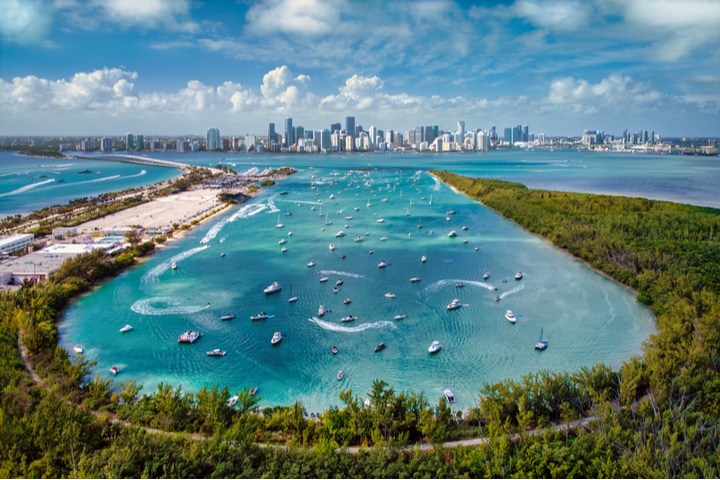
There are dozens of coastal and Great Lakes national parks within the United States where boaters can enjoy canoeing, kayaking, fishing, and more—be sure to read 7 Best National Parks to Go Boating. Visiting these parks—including paying any fees to use them—is a way to support them and ensure that the areas remain protected for years to come. Some of the best-known spots include Florida’s Biscayne National Park, Maine’s Acadia National Park, the Cape Cod National Seashore in Massachusetts, and California’s Golden Gate National Recreation Area. The beauty and wildlife in these locations are hard to beat, anywhere in the world.
About us
Boatsetter is the go-to app for boat rentals and on-water experiences. Whatever the adventure, we’ve got a boat for that—Set sail, start the party, go yachting, make your trophy catch, and hone your watersports skills! Download the Boatsetter app (App Store | Google Play). Make sure to follow @boatsetter on Instagram, and tag us in all your boat day pictures for the chance to be featured.
Editor’s Note: This article was originally published in April, 2023 and updated in April, 2024.

Kim Kavin has been on boats in more than 50 countries and islands, including in the Caribbean, Mediterranean, South Pacific, Indian Ocean and Southeast Asia. She grew up learning to steer a ski boat and Hobie Holder at her grandfather’s lake house in New Jersey, and went on to spend time aboard everything from America’s Cup racing sailboats to submarines.
Kim is a PADI-certified scuba diver and animal lover who always enjoys a good, long look around a coral reef. Her award-winning writing and editing regularly appears in national marine magazines and on leading websites. In her early years, she was a Dow Jones editing intern and a graduate of the University of Missouri-Columbia School of Journalism. When she’s not writing, Kim can usually be found hiking northwest New Jersey’s beautiful park trails with her adopted shelter mutt, Ginger.
